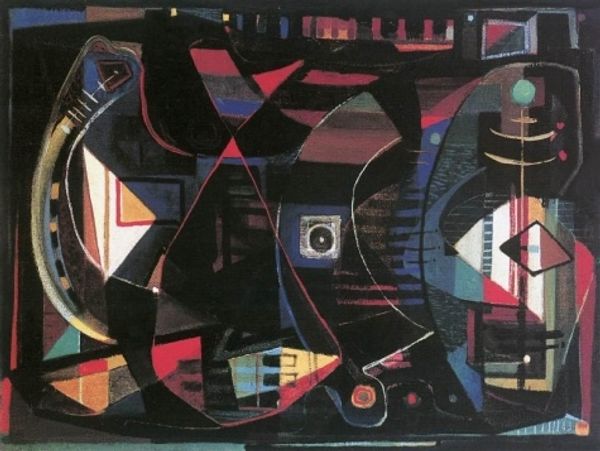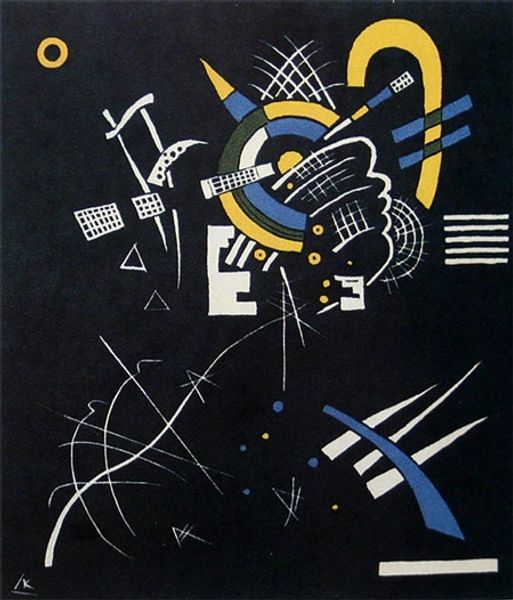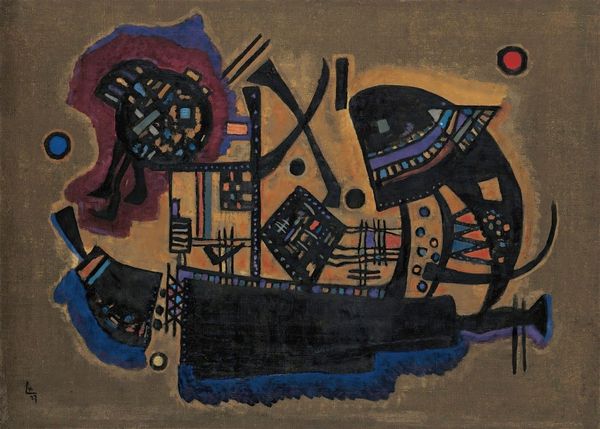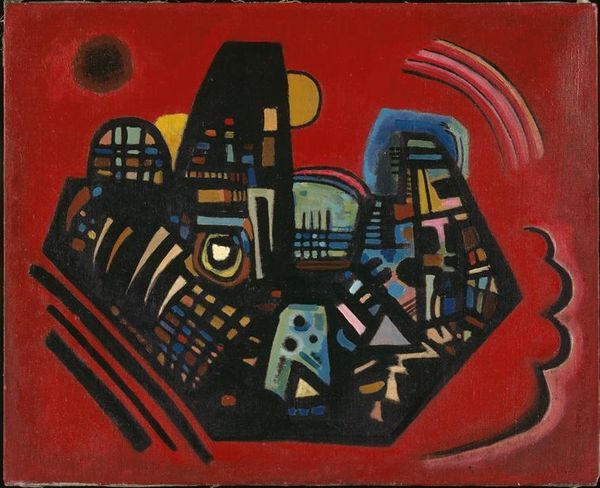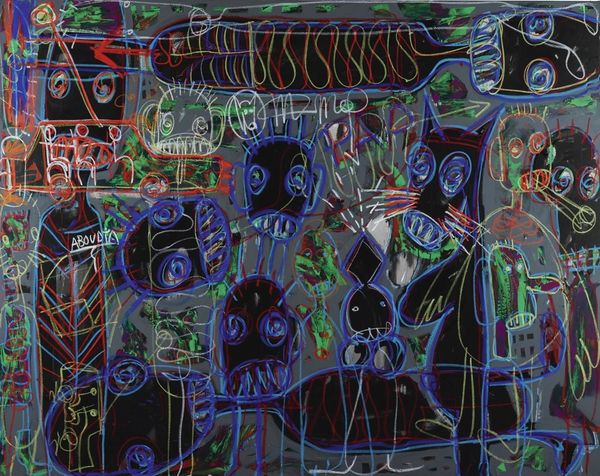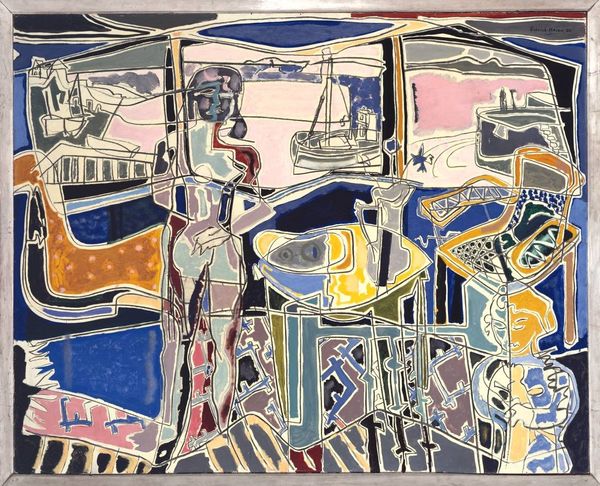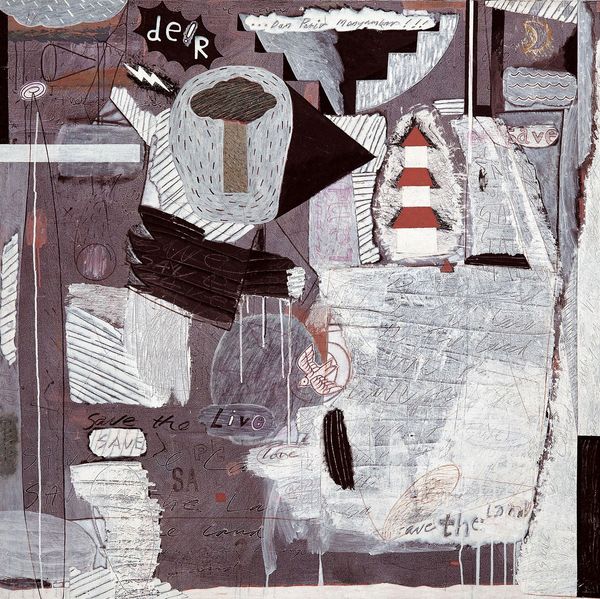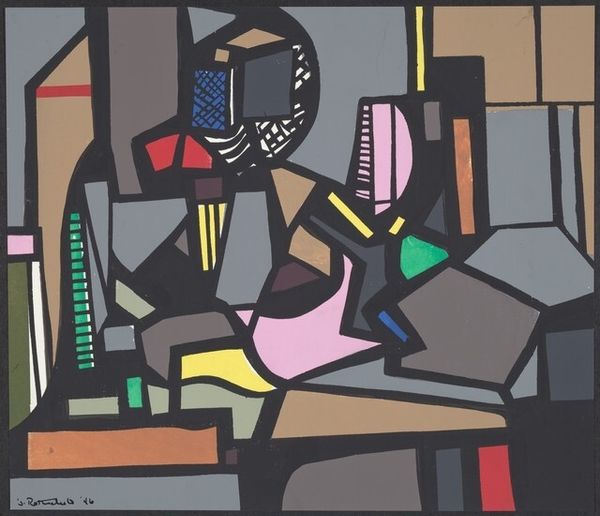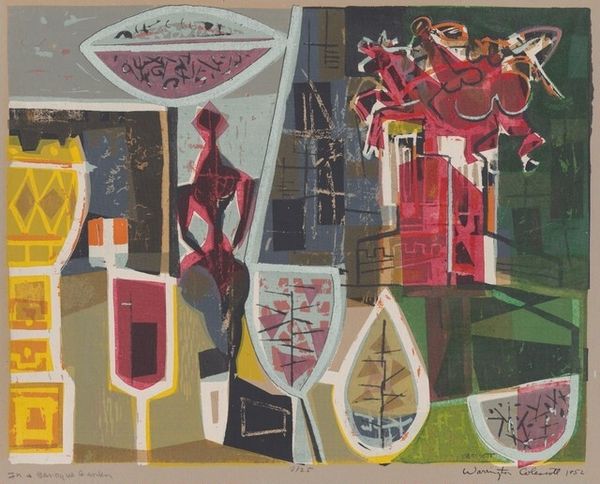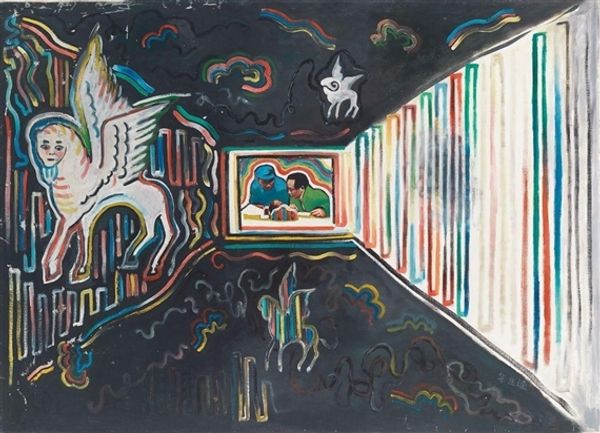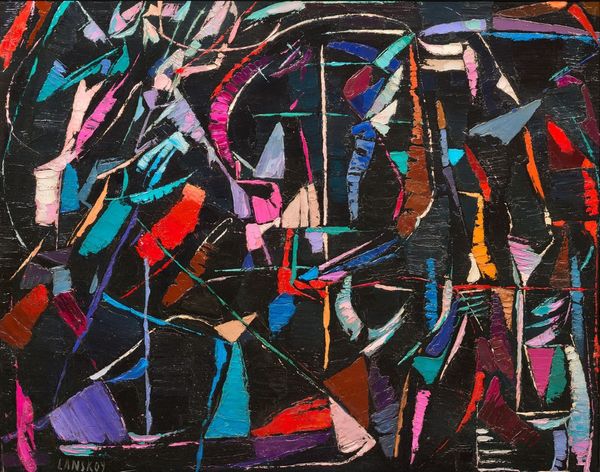
Copyright: Public Domain: Artvee
Curator: Looking at Wassily Kandinsky's "Concentré" from 1937, I feel as though I’ve stumbled into a dream—dark, perhaps a little unsettling, but definitely intriguing. What is your first take? Editor: I find it to be a masterclass in compositional tension, this dramatic juxtaposition against a black field; the scattered geometric elements imply both stability and chaotic energy. Curator: Chaos, absolutely! It feels as if someone took apart a perfectly ordered city and then scattered the pieces across a dark sky. Kandinsky really makes you *feel* the tension, doesn't he? Editor: Precisely. Kandinsky was deeply engaged with the theoretical connections between art and music. The interplay of forms and colors in "Concentré," executed in oil, can be analyzed as a visual orchestration, reflecting the dissonance and harmony found in musical composition. Curator: I can hear that music! I think for me, the colors hum—the deep blues and lilacs singing in a way. It reminds me of Stravinsky. And you can see he is so deliberate in his placement, each little square, circle, and squiggly line having its own weight and counterweight in the whole… a wild visual concert! Editor: Absolutely, a complex interplay! One may consider how the lines operate: note the contrasting effect between the broad, definite strokes and the finer, more delicate tendrils that add nuance to the geometrical framework of the piece. This dynamic activates the entire composition. Curator: Kandinsky believed art could speak directly to the soul, almost bypassing the rational mind. I think he manages that here. Editor: His commitment to non-objective art is palpable in this period; indeed "Concentré" is very focused on imbuing emotion through pure form. Kandinsky unlocks avenues of abstract expression by denying figuration altogether. The very essence of modernism. Curator: Well, "Concentré" is something alright... a true concentrated dose of Kandinsky’s visionary language, that still speaks to us, nearly a century on. Editor: Indeed. It pushes us to confront and reconsider the emotional potential inherent within abstract vocabulary.
Comments
No comments
Be the first to comment and join the conversation on the ultimate creative platform.

